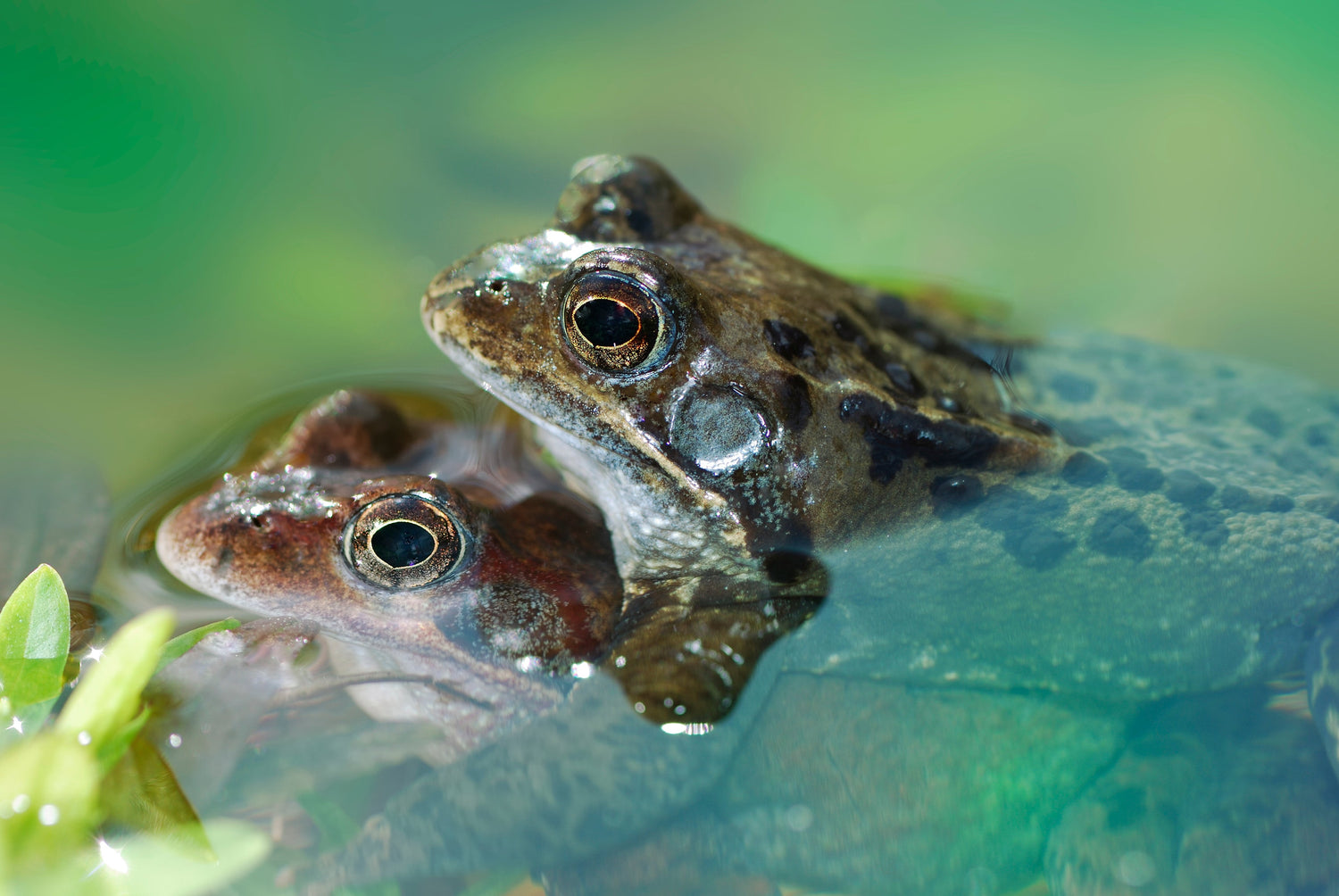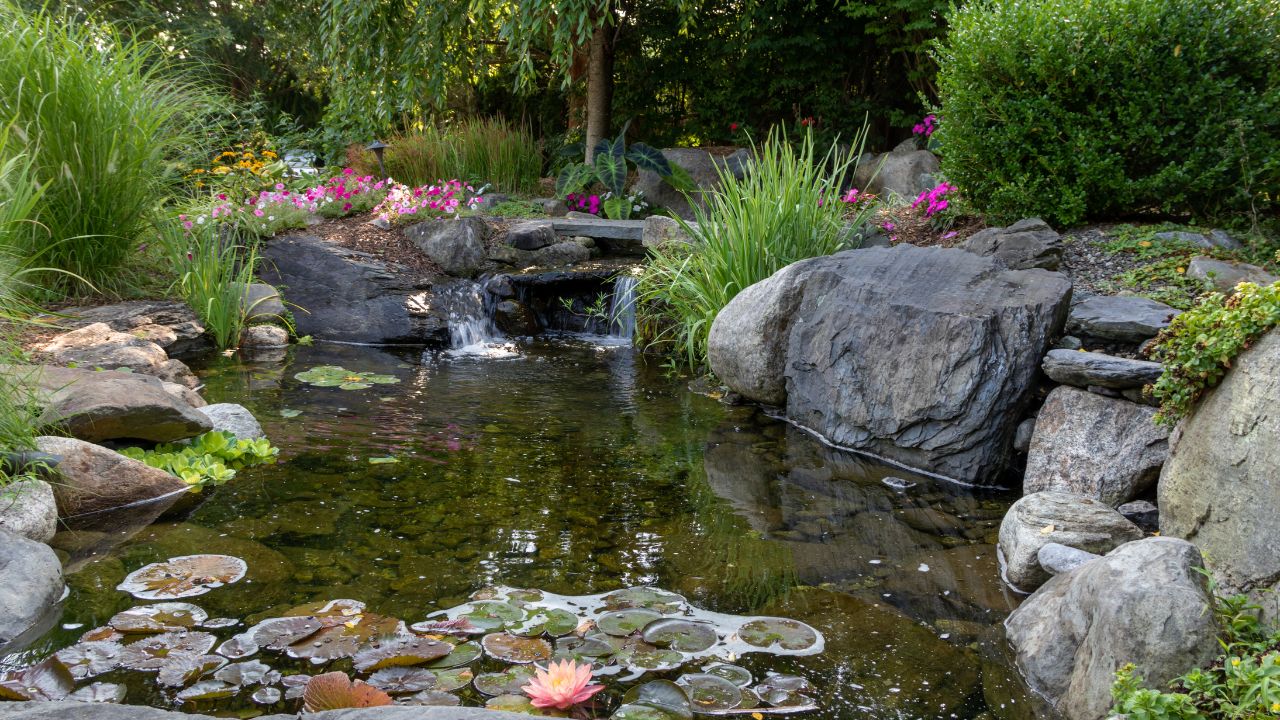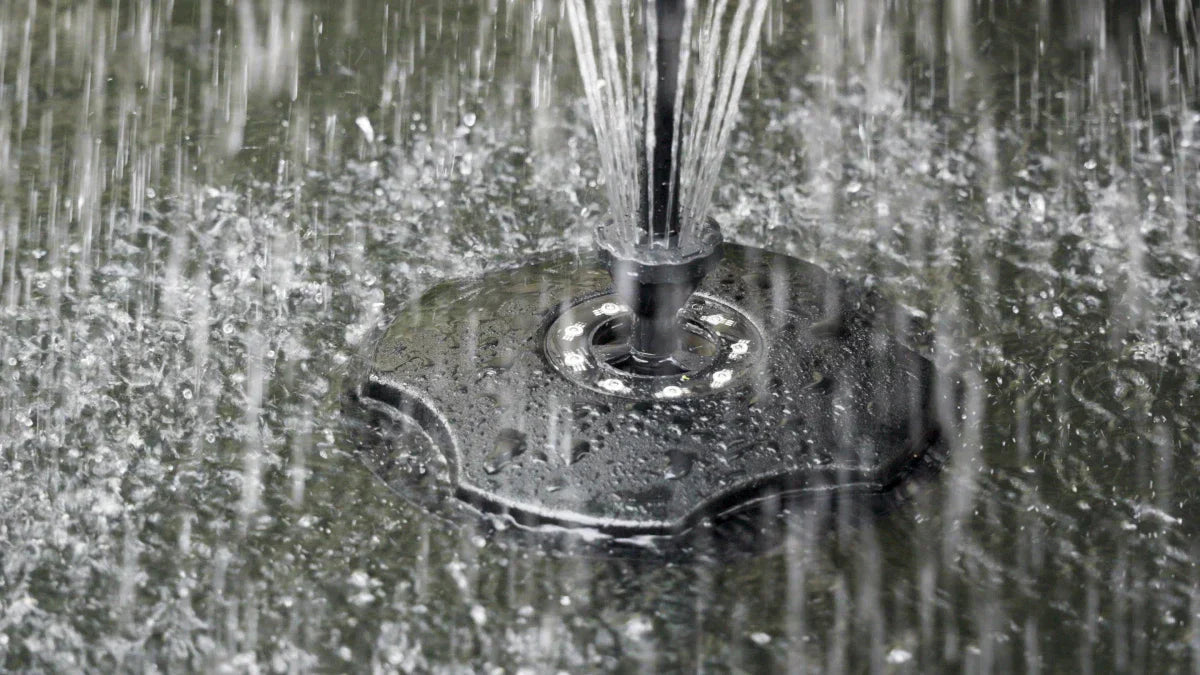You don’t need a country estate to welcome wildlife—just a backyard corner and a clear plan. If you’ve ever watched a dragonfly hover over a rain puddle or a robin bathe in a shallow dish, you’ve seen how quickly nature responds to water. A well-designed wildlife pond translates that natural appeal into a living mini-ecosystem: birds visit to quench their thirst, pollinators visit to top off their tanks, frogs call the reeds home, and the water itself is purer because life is occupying it. In this guide, we’ll walk through a practical, professional approach to pond garden design that balances ecology and aesthetics, and we’ll show how Poposoap’s solar-powered, low-maintenance gear simplifies pond landscaping wildlife projects without trenching cables or running noisy equipment.
1. Ecological Environment Design Concept
Begin with function, followed by form. A wildlife pond is not an ornament; it is a mini-ecosystem. That means planning ahead for niches diversity—shallow edges for insects and waders, thermal-stable depth zone, sun and shade places, and quiet water places along with gentle circulation. Compared to an ideal oval of blue water ringed with lawn, picture a mosaic: water, gravel, logs, emergent vegetation, a mini "beach," and some shaded edges.
Soft power, pure energy. Reduce disturbance of wildlife. A solar circulation loop irrigates and aerates with no grid wiring or generator rumble. Poposoap's solar pond filters and solar fountain pumps marry mini-panels with quiet magnetic-drive pumps, giving you flow for aeration and low-profile surface ripple which keeps mosquitoes away without harming amphibians and aqua insects. This is aligned with an ecologically bountiful proverb: use only as much energy as you need and let the sun set the tempo of the day.
Miniature hydrology. A suitable wildlife pond will have:
- Soft gradient margins where small creatures can safely access water.
- Heat refuge pocket (60–90 cm / 24–36 in) for heatwaves (or existing frost in winter).
- Aeration/circulation to establish dead spots and removal of stratification, thanks to a mini solar pump.
- Relaxing spots (under boulders or shelter) for tadpoles and larvae.
Materials do matter. Avoid treated wood or ornamental gravel that releases residue. Use washed river cobbles and inert liners. If a waterfall is incorporated, make it shallow and low stepped so frogs won't experience high-velocity water.
Finally, have minimal disturbance: position your pump so that it is easy to remove; have an inconspicuous service pathway so cleaning will not crush plants.
2. Habitat Plant Selection
Vegetation constitutes the landscape architecture of pond animals. Choose a multilayered color pattern to provide nectar, cover, perches, and spawning material seasonally.
Marginal and bog-edge vegetation (0–15 cm / 0–6 in of water):
- Soft rush, pickerel weed, and dwarf cattail give vertical canopy for dragonflies and protection for young amphibians.
- Water forget-me-not and marsh marigold offer nectar in spring when food is scarce.
- Rock is overflowed by creeping jenny and shores stabilized.
Shallow emergents (15–30 cm / 6–12 in):
- Dwarf iris and arrowhead offer pollen substrate and leaf structure for egg-laying.
- Thalia or umbrella sedge (dwarf varieties) create dapple shade and perch matrix.
Floating and oxygenators:
- Water soldier, hornwort, anacharis (climate-hardy varieties) oxygenate and uptake nutrients, reducing algae pressure.
- Floating rosettes (water lettuce in warmer areas; hardy native floaters where control is present) create calm micro-zones for tadpoles and invertebrates.
Bankside support:
- Native grasses, sedums, bee balm, and yarrow place pollinators near water.
- Berry shrubs produce bird attractant with root system to hold rim in place.
Tip: Plant fives and threes to get ecological redundancy and improved visual rhythm. Blend root types—rhizomes, fibrous, stoloniferous—so if a portion dies, others maintain the line intact against erosion.
Avoid invasives and problem species. Buy from reputable nurseries that sticker native or non-invasive choices. The intent behind wildlife pond design is to welcome local species, not bury them.
3. Water Body and Shoreline Design
Picture the pond as three zones with an inviting system:
A) The beach entrance (the invitation)
Scoop a soft cobble beach upon which liner is buried beneath 5–8 cm (2–3 in) of river gravel, sloping into 5–10 cm (2–4 in) water. Hedgehogs, birds, and insects utilize this refuge slope daily. Place a flat landing stone half in water as a safe resting spot.
B) The shelf (the engine)
Build a 30–40 cm (12–16 in) wide shelf at 10–20 cm (4–8 in) depth around at least half the pond. Here all the emergents reside and life explodes. Nest your solar pump intake here in a small filter shelter box or inside a stone cage with holes so it draws in plant-covered water without ingesting leaves.
C) The deep pocket (the buffer)
It should have one end drop to 60–90 cm to moderate temperature changes and provide shade. Quiet this section compared to the rest of the pond. If you have a waterfall or surface bubbler, pipe their return to the shallows to create a slow gyre that gently sweeps away detritus towards your intake without turning the whole pond into a whirlpool.
Circulation and filtration:
- Use a Poposoap solar fountain pump at low, spread pattern for surface agitator and oxygen exchange. Where fish is low or none (used best with amphibians), a ripple will scare away mosquitoes.
- For transparent water during fall foliage season, pair your pump with a Poposoap solar pond filter or the Poposoap Pond Filter Kit (AC model if it is within your means). These designs incorporate mechanical pads and biological media together to build habitat for nitrifying bacteria, by ecological best practice: filter slowly, oxygenate gently, and let biology polish.
- Want water flow but no turbulence? Mini Poposoap pond waterfall set overflows water back over a broad lip, creating oxygen-rich micro-bubbles on the surface and remaining underneath peaceful for larvae and tadpoles.
Shoreline details:
- Construct lock stones of various sizes together to create micro-coves; snug-in plug plants in between.
- Install a wildlife ramp—a smooth branch or rock—on one tapered end as a guaranteed way of escape.
- Install deadwood (wooden stump or log) along the bank; rotting wood is a hotbed for biodiversity.
Light, used to good effect: When you enjoy sitting by the pond's shore in the evening, incorporate Poposoap warm-white pond lights pointing out over the surface, but not into the water column. Warm light is optimally effective at supporting nighttime pollinator movement across blue-skewed spectra. Use timers and keep low, concentrated light.
4. Seasonal Change Factors
Pond garden design excellence looks to the long view in a year as a cycle, not a photo opportunity.
Spring: Sudden growth and dissemination. Begrudge thin, speedy growers; supply leaf litter packs and pole stacks for incoming insects. Initiate soft sun circulation when days become longer; wash panels for maximum production.
Summer: Pressure from algae and nutrient loading rise, and evaporation rises. Top up with rainwater if possible. Harvest one-third of surface growth while shading over more than one-half the surface. Clean pump screen and filter pads more often during heatwaves. A Poposoap battery backup keeps circulation steady through passing clouds, saving oxygen when water is warmest.
Fall: Leaves fall off—your filter actually works. Have a temporary leaf net on hand or use a surface skimmer attachment to reduce heavy loads. Allow seed heads to remain on edge plants for birds. Only mow what falls into the pond.
Winter: under freeze-thaw regimes, have an open gas exchange hole; a small solar bubbler on sunny days will do. Under cold regimes, reduce the waterfall return to reduce splash icing; or omit waterfalls and retain gentle aeration only. In the tropics, reduce growing only—retain light.
Across all seasons: Avoid algaecides and “quick-fix” chemicals; they disrupt the very web you’re trying to nurture. Ecological control = shade, plant uptake, skimming, and patient, low-intensity filtration.
5. Poposoap Ecological Series Display (What to Use, Where, and Why)
Below is a curated, real-world stack that has proven friendly for wildlife pond design, with product categories chosen from Poposoap’s solar and pond ecosystem lineup:
Core circulation (choose one, size to pond):
- Poposoap Solar Fountain Pump
Excellent for small ripples and oxygen breaking the surface. Lots of nozzles so you can switch from low bell (ideal for wildlife) to large spray for aesthetics on flat days. The power of the sun is such that you move in harmony with nature's cycles, a bonus for wildlife.
Biological polishing (optional but very much suggested for garden full of leaves):
- Poposoap Solar Pond Filter (solar-powered) or Poposoap Pond Filter Kit (AC)
Use mechanical pads along with Poposoap filter media (bio-balls and ceramic rings) as habitat for nitrifiers that process ammonia → nitrite → nitrate, keeping water transparency stable without harmful additives. Install intake on plant shelf and outflow near the surface.
Relaxing soundscape:
- Poposoap Pond Waterfall Kit
A low-lip return creates a gentle sheet of water that oxygenates without agitating larvae. Keep the drop subtle; the goal is a hush, not whitewater.
Evening ambiance (use judiciously):
- Poposoap Warm White Pond Lights or Poposoap RGB Solar Pond Lights
Beam direct lights from the bank out across water. Use low brightness and short evening openings to prevent disturbance to moths and bats.
Small spaces and courtyard wildlife:
- Poposoap Mini Water Garden Pond Kit
Ideal for patios or courtyards. Place a solar fountain pump on a bubbler head. Add a pebble ring and oxygenating stems to create a mini haven for bees, butterflies, and small birds.
Resilience add-on:
- Poposoap Battery Backup
Tree shelter or afternoon clouds passing will not discourage stored sun energy to constantly keep circulation going, which is especially important during the hottest months when dissolved oxygen concentration is lowest.
Care and ethics:
- Create filters that are cleaned in pond water rather than chlorinated tap water, and cover pumps, clean panels, to preserve helpful bacteria.
This suite encapsulates Poposoap's brand mission—beautiful water elements made simple, funnified, and kind to the planet we inhabit—without leaving you with massive infrastructure but with pro-level flow management, transparency, and atmosphere.
Bringing It All Together
A genuine wildlife garden pond is actually one of bringing guests in: between rock and leaf, sun and shadow, sky and water. In its play of access (beach), structure (shelf), sanctuary (deep pocket), and unobtrusive movement (solar circulation), you offer habitat that's full of home to the existing animals around.
Poposoap solar fountains, pond filters, waterfall kits, lighting, and mini pond packages allow you to issue that invitation and maintain it easily—no trenching, no noise pollution, no noxious chemicals. Start with a drawing, select a layering plant palette, plant your shoreline with love, and the system will advise you step by step what it requires. Your wildlife pond plan will be full of life in no time. Within months, it will be inevitable—like the garden had a craving, and you gave in.





Leave a comment
All comments are moderated before being published.
This site is protected by hCaptcha and the hCaptcha Privacy Policy and Terms of Service apply.